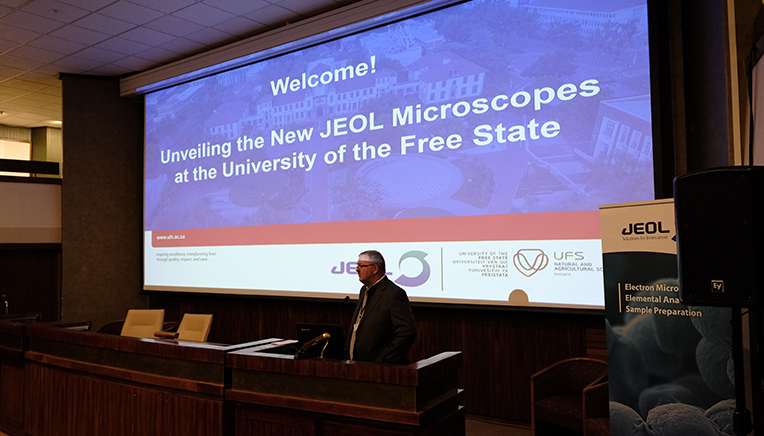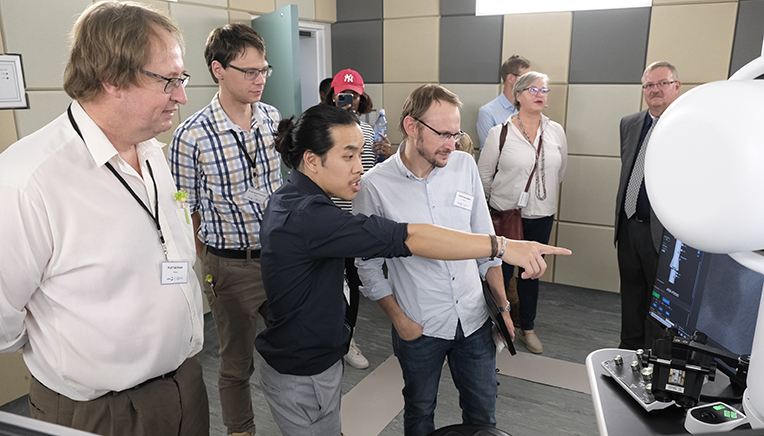The
Centre for Microscopy (CFM) in the Faculty of Natural and Agricultural Sciences at the University of the Free State (UFS) unveiled a sophisticated JEOL High Resolution Transmission Electron Microscope (HRTEM) during a two-day microscopy conference on 14 and 15 March 2023. The microscope is part of a larger investment into research equipment worth R65 million.
Speaking at the opening of the conference,
Prof Corli Witthuhn, out-going Vice-Rector: Research and Internationalisation, said the microscope purchase “is a significant milestone in the university’s bid for cutting-edge research”. The
HRTEM is part of a larger consignment of JEOL equipment at the UFS and, according to Dr Sarah Harper from JEOL UK, it places the UFS in a unique position.
UFS at the forefront in using electron microscopes
The HRTEM microscope can be utilised across disciplines and will give the UFS an advantage in uncovering new solutions and creating national and international interdisciplinary research collaborations. “The UFS is at the forefront in this field in SA and continues to push the boundaries,” Prof Witthuhn said. This move will also positively impact the training of honours, master’s, and doctoral students.
Prof Danie Vermeulen, Dean of the Faculty of Natural and Agricultural Sciences, reiterated Prof Witthuhn’s sentiments by saying that this equipment will set the faculty apart from its competitors. “The faculty already reached the goals of Vision 130 by being proactive,” he said. In the past seven years more than R300 million worth of equipment was acquired by the faculty, but he added that to be the best is not just about the best equipment – “the data coming from using this equipment is what will make the real difference”.

Prof Koos Terblans opens the conference on 14 March 2023. Photo: Stephen Collett .
Road to the JEOL HRTEM started in 2018
The process of acquiring a HRTEM microscope started in 2018 and was concluded with the purchasing of the JOEL microscopes in March 2020, a few weeks before the first COVID-19 lockdown. The purchase was made possible through the collaboration between the faculties of Natural and Agricultural Sciences and Health Sciences. Thanks to the dedication of staff members in the Centre for Microscopy and Physics, it was possible to accept delivery of the new HRTEM in June 2021.
Prof Koos Terblans, Head of the Physics Department and the Centre for Microscopy, who led the entire project, said this was one of the “proudest moments in my career”.
Installing the equipment involved various university resources, including the University Estates Department, which had to make additional structural changes to the room where the equipment is housed. This included digging two metres into the existing floor and placing the HRTEM on a 70-tonne solid concrete block, to ensure that the equipment was secure and vibration free.
Prof Terblans said now that the HRTEM from JEOL and its supporting equipment – the final piece of the R65 million research investment puzzle – is part of the faculty’s resources, it is up to the scientists and academics to utilise it for innovative research, enhance research productivity, and foster new collaborations.

Edward Lee shows the new HRTEM electron microscope to colleagues and conference attendees.Photo: Stephen Collett